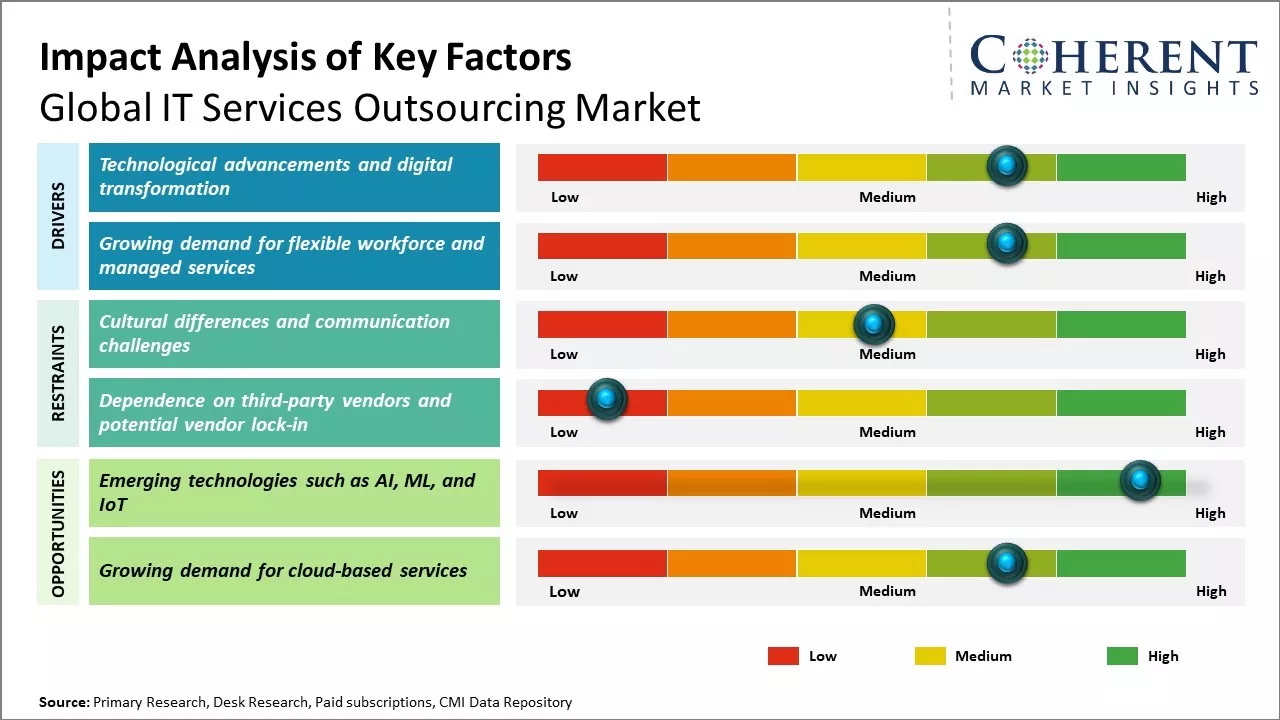Global IT services outsourcing market is estimated to be valued at USD 422.76 Bn in 2025 and is expected to reach USD 778.29 Bn by 2032, exhibiting a compound annual growth rate (CAGR) of 9.1% from 2025 to 2032.

To learn more about this report, Request sample copy
With increasing globalization of businesses, more companies are outsourcing their IT services such as infrastructure management and support to lower costs and focus on their core operations, the market is expected to witness significant growth during the forecast period. The key drivers of this market include focus on core competencies, access to advanced technologies, scalability, and cost optimization. There is rising demand for outsourcing application development and maintenance services, especially among small and medium enterprises. Growing penetration of cloud-based technologies and automation are also expected to boost the IT services outsourcing market.
Technological advancements and digital transformation
With technology advancing at an ever-increasing rate, it has become almost impossible for organizations to keep up with the latest innovations on their own. There is constant change in areas such as cloud computing, mobility, analytics, automation, Blockchain, and artificial intelligence. Moreover, customers are demanding improved digital services and experiences. Organizations are under pressure to quickly adopt new technologies and digital business models in order to remain competitive. This is driving greater reliance on IT services providers that have specialist skills and can help accelerate digital transformation journeys.
Outsourcing non-core technology functions such as infrastructure management, application development and support allows companies to focus internal resources on their core competencies. IT service providers invest heavily in research and building centers of excellence to stay ahead of the technology curve. They have the capabilities and expertise to integrate new technologies seamlessly into clients’ systems and operations. Particularly for newer and emerging technologies, outsourcing reduces the risks associated with in-house development and implementation. Service providers effectively share the costs and responsibilities of continuously evolving technology landscapes with their clients.
For instance, In February 2023, Oracle, a leading cloud technology company, launched Oracle Banking Cloud Services, a new suite of cloud-native, software-as-a-service (SaaS) solutions for the banking industry. This componentized and composable suite of services is designed to help corporate and retail banks modernize their applications and meet customer demands with agility. The services can be selected and combined to create tailored solutions that address each bank's unique requirements, enabling them to innovate with speed, security, and scale without compromising their existing environments.
Joining thousands of companies around the world committed to making the Excellent Business Solutions.
View All Our Clients